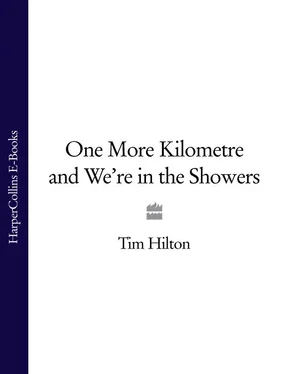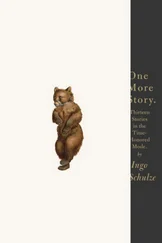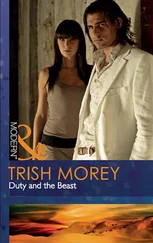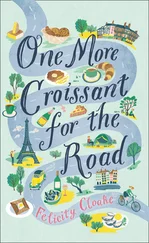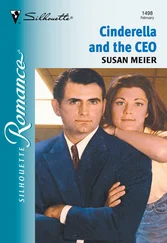An abbreviation of my master list of their names goes as follows.
Ballasalla
Rosegarth
The Oban
The Winston
South View
Greg-Malin
Thiseldo
Stoneleigh
Woodside
Mannin
Annandale
Hollyrood (sic)
Ellesmere
Palatine
Wavecrest
A bit of mainland patriotism here, some Scottishness, a more pronounced hint of Ulster than of the Republic of Ireland, one or two remnants of the ancient Celtic tongue of the Manxmen. Palatine is an obscurely boastful name for a boarding house. These places of lodging have masculine-sounding names, with the exception of Thiseldo, which I think must be a contraction of ‘this will do’.
Also masculine and gritty are the indigenous family names of Man. Here were born the Caines, Cregeens, Crellins, Kermodes, Kewleys, Killips and Quayles. Once they worked the land and scratched for its sparse mineral deposits. Some went to sea in the herring boats. Then they entered the lodging-house business or were employed in catering, amusement arcades, dance halls and the adventurous network of electric railways.
After the war the pattern changed again. Agriculture and fisheries went into further decline. The native population decreased. Young people were the most likely to leave. The older people of Man were joined by retired couples from the surrounding four countries, who often supplemented their pensions by opening guest houses. Old British club cyclists were among this influx. They had enjoyed their Manx holidays and preferred to live in Douglas than in Liverpool. There is also an Italian community on the island. Most Manx Italians were in Douglas because they were interned there during the war. Then they saw no reason to return to mainland Britain, especially if they were in the catering businesses. Some of the Italians, like the Signorio family of the Mannin guest house, were cycling fans and took block bookings from clubs.
The British interned Italians; and the Germans kept Curwen Clague in a prisoner-of-war camp for the duration of the conflict. Back home and back on the bike, Clague used his demobilisation period to make plans for the future of cycling. The Manx holiday calendar worked by the week rather than by day trips. Clague saw the opportunity for six consecutive days of varied cycling events and realised his vision in the Manx Cycling Festival, which was to grow until the early 1960s. In the 1950s thousands of cyclists regularly packed into the steamers for their holiday in Douglas, Ramsey or Peel. By day they raced or toured. Each night they went to the dance halls or the pubs (which had notably long opening hours). Clague was certain that his festival should occupy the same week of every June. He was right. Under his direction ‘Isle of Man Week’ became cycling’s equivalent of the Lancashire Wakes Week or the Birmingham Industrial Fortnight, when so many factories were closed or operated at half strength.
Clague’s programme included time trials, team time trials, the long mountain time trial around the Snaefell circuit, kermesses, Britain’s only summertime hill climb, various holiday games and contests (‘Miss Bicycle Belle’) and of course the international road race. In 1946 it had a French winner, Jean Baldessari, who went on to a professional career and rode the Tour de France in 1950–1. A more notable winner at Douglas would be Ercole Baldini. He won in his last year as an amateur, 1956, and a couple of months later, even before he had signed professional forms, took the hour record on the Vel Vigorelli. In 1958 Baldini was the world professional road champion and also came first in the Giro d’Italia.
By 1959 there were continental professionals at the Isle of Man Week, with entries from France, Italy and Spain. The pros included Jacques Anquetil, Federico Bahamontes, Louison Bobet, Fausto Coppi, André Darrigade and Raphael Geminiani. The top men of the day, they arrived in state at the little airport at Castletown. They didn’t race hard, but at least they had come to the Isle of Man. Their presence pleased everyone, especially no doubt Jim Hinds of the Southern Roads CC, who won the international race in front of these legendary champions.
So, in the unlikely venue of the Isle of Man, some of us could feel that British and continental cyclists were becoming closer. But we were still British, in our old ways and modest aspirations. I remember 1959. It was my year of dreams. Bahamontes won the Tour. Alf Engers, of the Barnet CC at that time, reduced the British 25 record to 55.11. I was shaving my legs and doing 300 miles a week, fantasising about going to spend a week on the Isle of Man. What a steamer journey from Fleetwood to Douglas, chugging across the wide straits of Colwyn Bay … I imagined a place where tailless cats chased red squirrels, where I might meet a Bicycle Belle and perhaps ride in the lesser races. Fun and glory in the land of kippers and fairy lights! The plan came to nothing, like most of my cycling projects at that date and ever since.
On a bike you can go anywhere – and in my own book, if I wish, I can go on and on about the Isle of Man. Curwen Clague died in 1981, but his enterprise continues to this day. For some time the cycling festival has been directed by Desmond Clague and the annual ‘Curwen’s Race’ is ridden in his father’s memory. Long may it continue.
But now I return to the 1950s. My list of lodging houses tells me that the price of bed and breakfast on the Isle of Man was generally between 8 s. 6 d. and 12 s. 6 d. The steamer fare from Fleetwood to Douglas was 17 s. The ferry would take your bike for an exorbitant 6 s . Tandems cost an even more exorbitant 9 s.
The prices I mention are part of our cycling story. Nearly everyone had to make prudent calculations in shillings and pence, either to race at any level or to go on holiday. Ours has been a sport for people who had to count money saved from their wages. Unlike some sports – athletics, rugby, rowing, tennis, cricket, boxing – competitive cycling never had any wealthy adherents. There were gentlemen amateurs during the short fashionable craze for cycling in the 1890s, but none thereafter. A handful of people made money from racing but there was no professional class. In the 1950s British cyclists were almost always employed in sound and unglamorous ways. I will describe their jobs in a moment. My point now is that they never had any spare money, cash that they could spend in a careless way.
All the same, there were signs that quite big money was almost within reach – money and glamour too. The Manx international race had such prestige. So many people wanted to see it that Curwen Clague used grandstands at the race finish on Douglas promenade. He was able to charge £6 for grandstand seats. That was about the cost of a week’s lodging in a Douglas boarding house – a pretty high price – but the stands were none the less filled. The fans were no doubt prepared to pay more to be near the continental stars, especially if they could mingle with them after the race, as often happened.
My fellow Brummie John Turner (Moseley Road Junior Art School and then of the Midland C & AC) has a telling story about the end of the international road event in 1959.
I had a short talk with Louison Bobet and André Darrigade at the end of a pro race in the IOM one year … Bobet was polite, immaculate, not a hair out of place, apologised that he needed to sponge himself down with Eau de Cologne before talking on the wall by the grandstand. Darrigade joined us looking very fierce and all I could see were his massive thighs and lower legs totally criss-crossed with varicose veins that stood out like ropes on his muscular limbs. Simpson came along … just out of sympathy I said … ‘remember what Bobet has been through’ (a major op to remove masses of pus from his back, taking seven hours of surgery). Without a change of expression Simo looked straight at me and said ‘Who cares a **** about Bobet?’
Читать дальше
